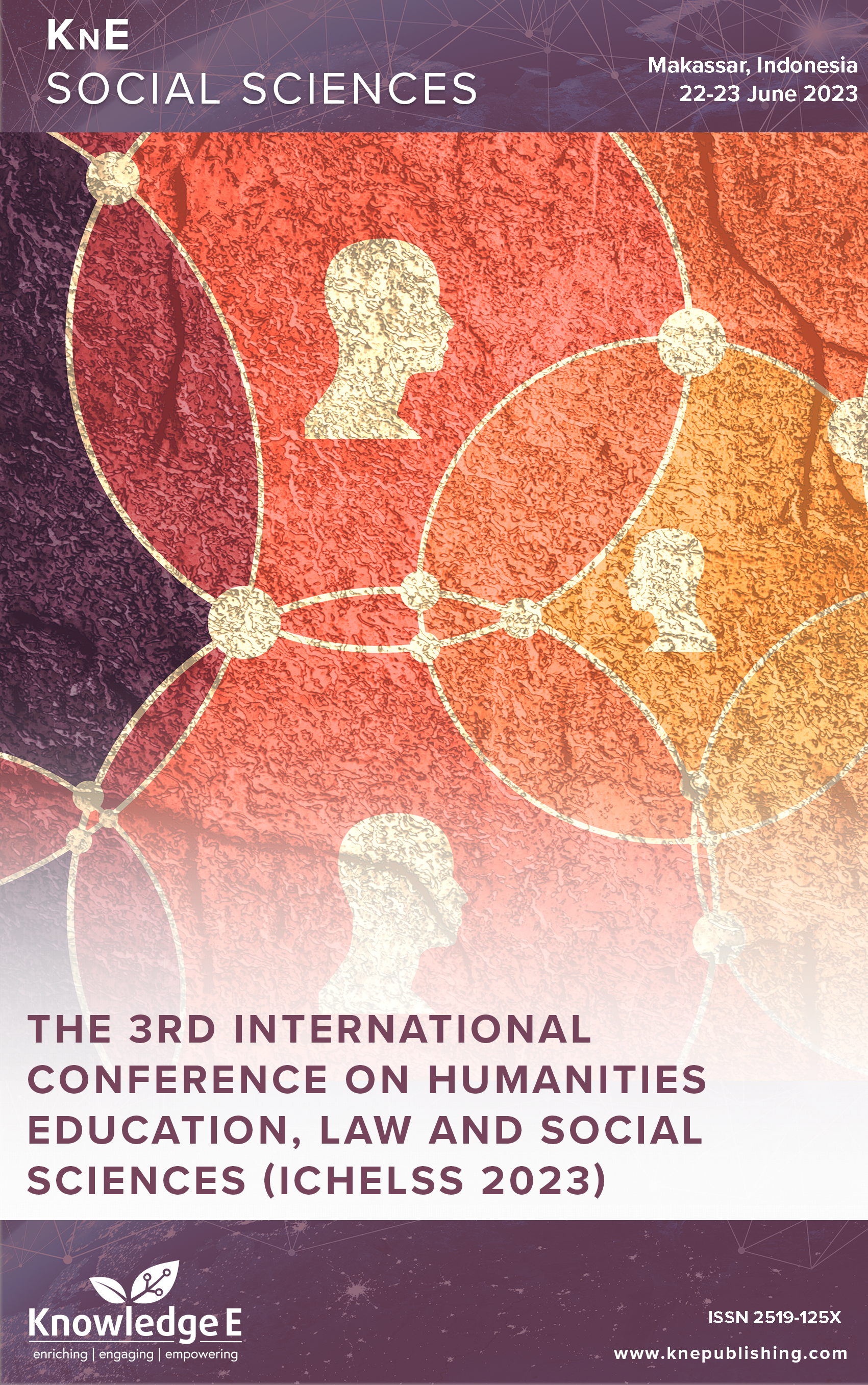Regional Development Planning Strategy as a Poverty Reduction Solution in Polewali Mandar Regency
DOI:
https://doi.org/10.18502/kss.v9i2.14884Abstract
The purpose of this research is to describe regional development planning strategies as a solution to reduce poverty in Polewali Mandar Regency. This research was conducted in Polewali Mandar district from July 2022 – January 2023 by conducting a literature review and Focus Discussion Group with the local government through the Research, Development and Planning Agency of Polewali Mandar Regency, Public Works and Regional Spatial Planning Office, Food Crop Agriculture Service. Based on the results of the study, it can be concluded that poverty alleviation is a priority for the Polewali Mandar district government, bearing in mind that the number of poor people increases every year influenced by topographical and geographical factors in areas that are difficult to reach, so a poverty alleviation strategy is needed as stipulated in Polewali Mandar Regent Regulation No. 25/2009 2020 – 2024 Concerning the Regional Poverty Reduction Strategy for Polewali Mandar Regency.
Keywords: planning strategy, regional development, poverty
References
Omri A, Ben N. “Good governance for sustainable development goals : Getting ahead of the pack or falling behind?” Environ. Impact Assessment. Rev., vol. 83, no. December 2019, p. 106388, 2020, https://doi.org/10.1016/j.eiar.2020.106388. DOI: https://doi.org/10.1016/j.eiar.2020.106388
Guney T. Governance and sustainable development: how effective is governance?1. J Int Trade Econ Dev. 2017;26(3):316–35. DOI: https://doi.org/10.1080/09638199.2016.1249391
Mohamed A, Worku H, Lika T. Urban and regional planning approaches for sustainable governance: the case of Addis Ababa and the surrounding area changing landscape. City Environ Interact. 2020;8:100050. DOI: https://doi.org/10.1016/j.cacint.2020.100050
AHS Pratama, E. Rustiadi, and Y. Syaukat, “Bangkalan Regency Economic Area Development Strategy Regional Development Strategy of Economy in Bangkalan Regency Ahmad Herlyasa Sosro Pratama 1, Ernan Rustiadi 2, Yusman Syaukat 3,” Manaj. developer. Dr., vol. 10, no. November, 2018. DOI: https://doi.org/10.29244/jurnal_mpd.v10i2.27788
Solihin MA. “top down bottom up planning_as an alternative to strategic planning_2,” Jur. Soil Science and Resources. Fac land. Pertan. Univ. Padjadjaran in the Lab. Survey Mapping and Eval. land, Bid. developer expertise. Will; 2005.
N. Perera, “Introduction: Planning for Development,” Bhumi, Plan. res. J., vol. 5, no. 1, p. 1, 2016, https://doi.org/10.4038/bhumi.v5i1.20. DOI: https://doi.org/10.4038/bhumi.v5i1.20
AA Fitrianti, AA Romadhan, and Salahudin, “Planning for Rural Infrastructure Development: A Study of Structured Literature,” J. Reg. Rural Dev. plans., vol. 6, no. 1, pp. 47–64, 2022, https://doi.org/10.29244/jp2wd.2022.6.1.47-64. DOI: https://doi.org/10.29244/jp2wd.2022.6.1.47-64
Afandi MN, Dawud J. “Regional Innovation Strategies in Improving Public Services: A case study of Garut District,” Adv. soc. science. Educ. Humanity. res.! st Int. conf. Adm. science. (ICAS, 2019) Atl. Press, vol. 343, no. Icas, pp. 539–542, 2019. https://doi.org/10.2991/icas-19.2019.112. DOI: https://doi.org/10.2991/icas-19.2019.112
Rassanjani S. Ending Poverty: Factors That Might Influence the Achievement of Sustainable Development Goals (SDGs) in Indonesia. J. Public Adm. Gov. 2018;8(3):114. DOI: https://doi.org/10.5296/jpag.v8i3.13504
Huertas Ramos JD. Development planning: from the concepts to the technique. Adm. Desarro. 2017;47(2):24–35. DOI: https://doi.org/10.22431/25005227.389
Dawkins CJ. Regional development theory: conceptual foundations, classic works, and recent developments. J Plann Lit. 2003;18(2):131–71. DOI: https://doi.org/10.1177/0885412203254706
Faguet J. Decentralization and Governance. World Dev. 2014;53:2–13. DOI: https://doi.org/10.1016/j.worlddev.2013.01.002
LMJ Daniel J. Marcucci. James D. Brinkley, “Five Concepts in Planning Theory Useful to Coastal Management,” Coast. soc. 22nd Int. conf., vol. 4, no. 1, pp. 1–23, 2016.
Kry S, Sasaki N, Datta A, Abe I, Ken S, Tsusaka TW. “Assessment of the changing levels of livelihood assets in the Kampong Phluk community with implications for community-based ecotourism,” Tours. Manag. perspective., vol. 34, no. October 2018, p. 100664, 2020, https://doi.org/10.1016/j.tmp.2020.100664. DOI: https://doi.org/10.1016/j.tmp.2020.100664
Qu J, Ma C. “Regional development theory and its instructions for regional culture industry development,” Int. conf. Educ. Technol. Manag. science., no. Icetms, pp. 0870–0873, 2013, https://doi.org/10.2991/icetms.2013.334. DOI: https://doi.org/10.1109/NCES.2012.6543585
Guild RL. Infrastruture Investment And Interregional Development Theory, Evidence, and Implications for Planning Robert. Works Manage. 2000;4(4):274–85. DOI: https://doi.org/10.1177/1087724X0044002
Folmer H, Oosterhaven J. “Spatial inequalities and regional development: A framework,” Spat. inequality. Reg Dev. 1979;:1–19. DOI: https://doi.org/10.1007/978-94-017-3046-4_1

